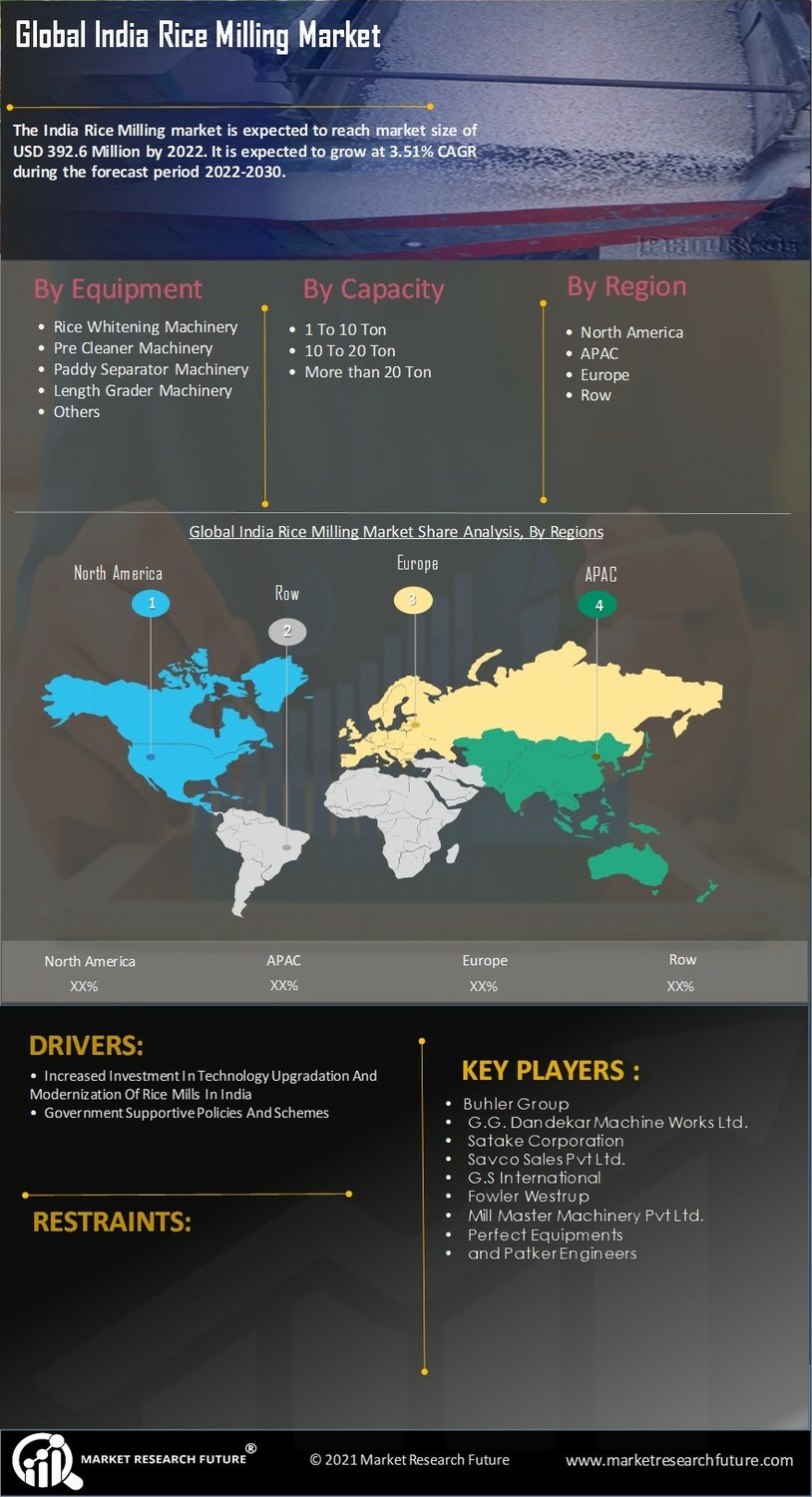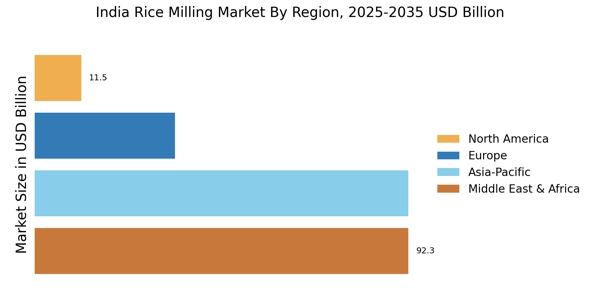Increasing Demand for Rice
The rising population in India is driving an increasing demand for rice, which is a staple food for a significant portion of the population. As of October 2025, the per capita rice consumption in India is estimated to be around 90 kg per year. This growing demand is likely to propel the India Rice Milling Market, as more rice needs to be processed to meet consumption needs. Additionally, urbanization and changing dietary preferences are contributing to this trend, leading to a higher demand for processed rice products. The India Rice Milling Market must adapt to these changes by enhancing production capacities and improving milling efficiencies to cater to the evolving consumer preferences.
Government Initiatives and Support
The Indian government has been actively promoting the agriculture sector, including the rice milling industry, through various initiatives and policies. As of October 2025, schemes such as the Pradhan Mantri Kisan Samman Nidhi and the PM Fasal Bima Yojana are providing financial support to farmers and millers alike. These initiatives aim to enhance productivity and ensure better price realization for rice producers. The government is also investing in infrastructure development, which is crucial for the India Rice Milling Market. Improved transportation and storage facilities are expected to facilitate smoother operations and reduce post-harvest losses, thereby benefiting the entire supply chain.
Export Opportunities for Milled Rice
The India Rice Milling Market is poised to benefit from the growing export opportunities for milled rice. As of October 2025, India is one of the largest exporters of rice globally, with a significant share in the international market. The demand for Indian basmati and non-basmati rice is increasing in various countries, driven by the quality and competitive pricing of Indian rice. This trend is likely to encourage investments in milling technology and capacity expansion within the India Rice Milling Market. Additionally, favorable trade agreements and policies are expected to further enhance export potential, making it a lucrative avenue for growth.
Focus on Quality and Value-Added Products
There is a noticeable shift towards quality and value-added rice products in the India Rice Milling Market. Consumers are increasingly seeking premium rice varieties and processed products that offer convenience and health benefits. As of October 2025, the market for organic and fortified rice is expanding, reflecting changing consumer preferences. This trend is prompting millers to invest in quality control measures and product diversification. By focusing on producing high-quality rice and value-added products, the India Rice Milling Market can cater to the evolving demands of consumers, thereby enhancing profitability and market share.
Technological Innovations in Milling Processes
Technological advancements in wheat milling machine equipment are transforming the India Rice Milling Market. The introduction of automated and semi-automated milling systems has improved efficiency and reduced labor costs. As of October 2025, the adoption of advanced milling technologies, such as laser sorting and digital monitoring systems, is becoming more prevalent. These innovations not only enhance the quality of the milled rice but also increase the overall yield. Furthermore, the integration of artificial intelligence in milling operations is expected to optimize processes and reduce waste. The India Rice Milling Market is likely to benefit from these technological improvements, as they enable millers to produce higher quality rice while minimizing operational costs.


















Leave a Comment